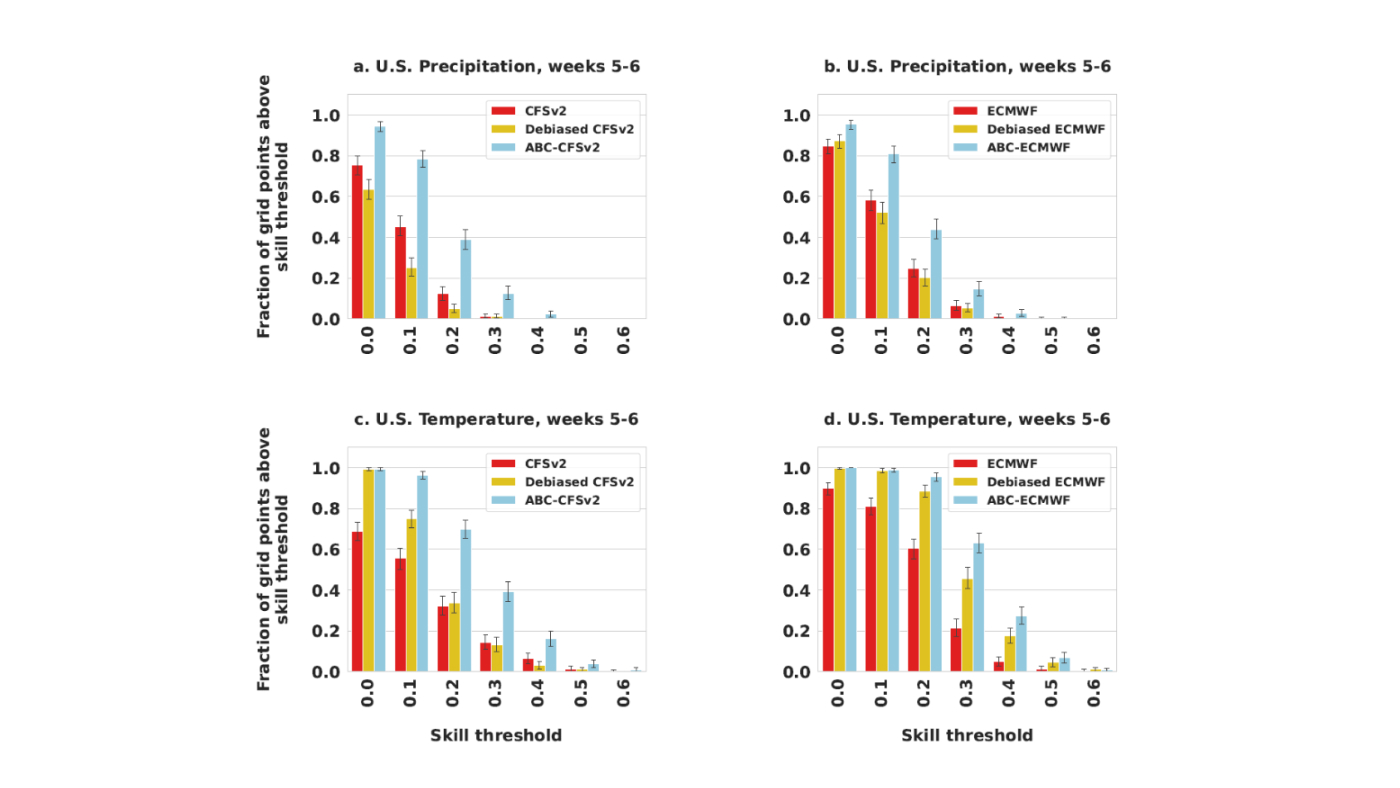By Douglas Gantenbein, Senior Writer, Microsoft News Center
Climate scientists, environmental scientists, governmental officials, shipping companies, business owners, farmers—all need access to accurate information about the weather.
The challenge certainly isn’t the availability of data about weather. Climate scientists are swimming in it. The National Weather Service maintains a thousand weather stations in the United States, for instance, all of which constantly collect data on temperatures, wind speed, rainfall, relative humidity, and more. Other weather-focused sensor networks, such as FLUXNET, create additional data streams.
Spotlight: AI-POWERED EXPERIENCE
What’s difficult is extracting information from all that data—information people can use to make decisions about managing forests, planting crops, or even deciding where to build a wind farm or a hotel. To make such decisions, people need reliable information on the climate—the typical weather patterns they can expect to encounter at different times and places.
Providing reliable climate information is the object of a new analytical tool called FetchClimate, a cloud-based, intelligent data-retrieval service.

Drew Purves
FetchClimate, which drew a great deal of interest in March during Microsoft Research’s annual TechFest, is the creation of Drew Purves, head of the Computational Ecology and Environmental Science Group, part of the Computational Science Lab at Microsoft Research Cambridge.
Purves worked with Microsoft Research colleague Vassily Lyutsarev, and a team of students from Moscow State University, supported by Microsoft Research Connections.
With FetchClimate, scientists and others can retrieve vast amounts of climate information without laboriously searching through thousands of data files. FetchClimate queries multiple data sources, then transforms the data as needed, and searches can be refined by region, dates, resolution (such as square miles or square yards), and much more.
Purves uses the example of forests in the eastern United States as an example of how FetchClimate can help researchers.
He says that huge amounts of forest data have been collected for decades—measuring tree growth and deaths as well as different aspects of forest health, sometimes down to plots of land only a few meters square.
“It’s a fantastic set of data,” Purves says. “But we want to relate what we can see going on in the forest data to the climate. Let’s say you go to one particular place and ask, ‘What was the average temperature between 1992 and 1997?’ That’s really easy to say, but actually retrieving that information is simply awful, and when you finally do, you’re probably rewarded with a 25-gigabyte binary file that you can’t even open.”
The difficulty in extracting such seemingly rudimentary information from climate data is what led Purves to help create FetchClimate.
“I imagined my ideal climate-information service,” he says, “and had it built.”
With FetchClimate, researchers can get climate information via a web-based interface or by inserting a few lines of code inside a .NET program. And because FetchClimate is “intelligent”—it selects the best possible data source for the data a researcher seeks—it not only finds desired information, but it also offers an estimate of the accuracy of that information.
FetchClimate, Purves says, can offer tremendous value to climate scientists studying issues such as climate change. For these scientists, the first step in determining what might happen to the Earth’s atmosphere, oceans, and geography is to relate processes such as cloud formation or tree growth to the current climate. FetchClimate can help with that by mining vast stores of data and enabling scientists to view the results in many ways.
Importantly, FetchClimate isn’t a short-term weather forecaster—the National Weather Service and its international counterparts can handle that. Rather, it focuses on what the average conditions are in an area. That’s more important for large-scale, long-term planning based on expected weather conditions for, say, a typical summer in Britain, although FetchClimate also lets you see how those typical patterns have changed over time.
FetchClimate is not just for climate scientists. An agricultural scientist might want to relate crop yields to expected annual rainfall in an area. An epidemiologist might want to understand how large-scale temperature change affects the spread of mosquitoes. A hotel owner might want to compare typical winter temperatures and snowfall before investing in a ski resort. And skiers might want to know those typical temperatures and snowfall amounts before deciding on their next vacation spot.
Purves often uses the example of wind farms.
“To plan where to put those and to predict how much power they might give you, you don’t need to know whether it’s going to be windy tomorrow,” he says. “You need to know how windy different places are on average and how the wind speed varies throughout the year or throughout the day.”
FetchClimate can find that information in a few seconds with a few clicks of a mouse.
“Of course, wind farms are only one example,” Purves says. “Think of solar panels, or planning what crops to plant, or, for that matter, projecting sales of winter coats or air-conditioning units.”

Vassily Lyutsarev
The project came to fruition with remarkable speed. Purves began thinking in earnest about such a tool in late 2010. Microsoft Research Connections provided funding for two students in Moscow, who, along with Lyutsarev, wrote the basic underpinnings of FetchClimate in two months. Four months later, they had added features such as Dynamic Data Display, what FetchClimate uses to visualize data. They also created a browser-based version of FetchClimate, which is more user-friendly.
Purves describes FetchClimate’s “intelligence” as the ability to execute a set of rules against data it finds and then choose an appropriate algorithm for mining that data and turning it into information.
“I think of FetchClimate as having a thin layer of intelligence between the user and the data,” he says. “In the future, it might have a much thicker layer, so you can ask higher-level questions. You might say to it, ‘Give me the prediction of wheat yields here,’ and it could identify and combine the appropriate data to answer that question.”
Purves and his Microsoft Research Cambridge colleague Matthew Smith, have used FetchClimate in a study of terrestrial carbon—specifically, modeling the ability of plants to absorb excess carbon dioxide and act as a brake for rising global temperatures. The researchers were able to use FetchClimate to create an easy-to-use model that quickly shows the carbon-sequestration potential for nearly any spot on the planet, thanks to FetchClimate’s ability to tag a wealth of carbon data with climate information.
“You had carbon models before, but they weren’t properly tied to data,” Purves says, “so, actually, they were kind of guesses. We’ve got the only model of the carbon cycle that would stand up in court.”
Purves also sees large-scale modeling of the potential impact of climate change as a key role for FetchClimate. By taking past data about rainfall, temperatures, and other weather information, and adding climate predictions from various models, FetchClimate could be used to model scenarios such as the implications for Seattle if its weather conditions began to resemble those of San Francisco.





